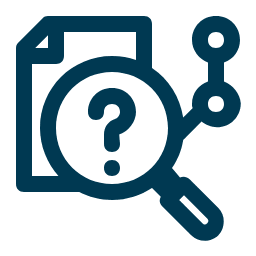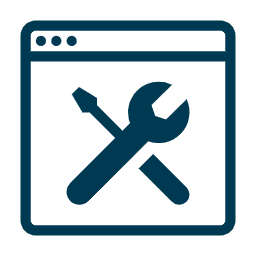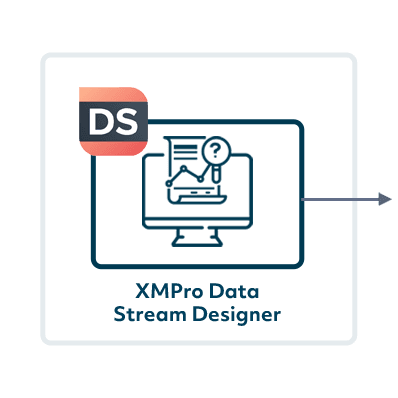Predictive Maintenance for Robotic Arms in the Automotive Industry
Introduction
In the automotive industry, robotic arms are crucial for various manufacturing processes, including assembly, welding, and painting. Ensuring their uninterrupted operation is vital for maintaining production efficiency and quality. Predictive maintenance of these robotic arms using XMPro’s Intelligent Business Operations Suite (iBOS) can significantly enhance their reliability and longevity.
The Challenge
Robotic arms in automotive manufacturing face significant challenges impacting their efficiency and reliability:
- Wear and Tear from Continuous Use: Constant operation leads to the deterioration of mechanical and electrical components, risking breakdowns and reduced precision.
- Complexity in Predicting Failures: The intricate nature of robotic arms, with multiple moving parts and control systems, makes it difficult to accurately predict failures using traditional maintenance schedules.
- Impact on Production Efficiency: Malfunctions or downtime in robotic arms can significantly disrupt production, affecting overall efficiency, product quality, and leading to potential financial losses and reputational damage in a competitive industry.
The Solution: XMPro’s Robotic Arm Predictive Maintenance Solution
XMPro’s Intelligent Business Operations Solutions (iBOS) offers a predictive maintenance solution for robotic arms in the automotive industry, designed to minimize downtime and optimize maintenance schedules. By leveraging real-time data and advanced analytics, it provides comprehensive asset status overviews, prioritizes maintenance alerts, and offers detailed metrics for individual assets. This proactive approach predicts potential failures and recommends preemptive measures, enhancing operational efficiency, extending the lifespan of robotic arms, and reducing maintenance costs.
Key Features
Real-Time Monitoring:
Continuous monitoring of robotic arm performance using IoT sensors that track parameters like vibration, temperature, and operational efficiency.
Data Integration and Analysis:
Aggregating data from sensors and integrating it with the digital twin model of the robotic arm.
Analyzing historical and real-time data to identify patterns indicative of potential failures.
Predictive Analytics:
Utilizing machine learning algorithms to predict potential breakdowns and maintenance needs.
Forecasting the remaining useful life of robotic arm components.
Automated Alerts and Maintenance Scheduling:
Generating automated alerts when potential issues are detected.
Recommending optimal maintenance schedules based on predictive analysis.
Digital Twin Simulation:
Simulating different operational scenarios and maintenance interventions using the digital twin to optimize robotic arm performance and maintenance strategies.
How XMPro iBOS Modules Work Together To Create This Condition Monitoring Solution

XMPro Data Stream Designer
XMPRO’s Data Stream Designer lets you visually design the data flow and orchestration for your real-time applications. Our drag & drop connectors make it easy to bring in real-time data from a variety of sources, add contextual data from systems like EAM, apply native and third-party analytics and initiate actions based on events in your data.
Figure 1. Robotic Arm Production Line Condition Monitoring
This robotic arm production line condition monitoring data stream begins by ingesting sensor values for vibration and temperature, then contextualizes this data with the asset’s make, model, and operational context. The contextualized data is broadcasted and checked against a vibration threshold. If the threshold is exceeded, an SMS notification is sent. Additionally, the system runs a recommendation to assess the condition further and suggest necessary actions, ensuring comprehensive monitoring and timely maintenance responses.
Figure 2. Robotic Arm Predictive Maintenance & Performance
This robotic arm predictive maintenance and performance data stream begins by ingesting multiple sensor values, including current draw, voltage levels, temperature, vibration, acoustic data, and network integrity information. It then performs several transformations to join mechanical and electrical data, merge robot and network information, and incorporate maintenance and context information. The combined data is used to calculate the individual robot’s Overall Equipment Effectiveness (OEE).
The data stream then checks if the current draw thresholds are exceeded and creates a work request for electrical faults if necessary. It also employs anomaly detection for unusual temperature increases, a regression model for Remaining Useful Life (RUL) predictions on mechanical parts, and classification AI for electrical faults. The AI predictions for mechanical and electrical data are combined to generate recommendations for maintenance actions.
Additionally, the system broadcasts the contextualized data for further use and ensures comprehensive monitoring and timely maintenance responses by generating actionable recommendations for both mechanical and electrical aspects of the robotic arm.

Recommendation Manager
XMPRO Recommendations are advanced event alerts that combine alerts, actions, and monitoring. You can create recommendations based on business rules and AI logic to recommend the best next actions to take when a certain event happens. You can also monitor the actions against the outcomes they create to continuously improve your decision-making.
Figure 1. High Temperature on Robotic Arm Base Bearing Recommendation
This recommendation identifies a high temperature condition on the robotic arm’s base gearbox bearing, triggered by AI model or traditional rule logic. It enables early detection of potential issues, minimizing downtime and extending equipment lifespan. Users can add notes, assign, share, and create work requests with special instructions. The system tracks whether the recommendation solved the problem or was a false positive, ensuring timely responses and continuous improvement in predictive maintenance.
Figure 2. Configure With Granular Rule or AI Model Logic
In this example, the recommendation for “High Temperature on Main Base Bearing” demonstrates how XMPro’s recommendation system can be configured using granular rule logic, AI model logic, or a combination of both. The rule triggers when temperature data from the data stream exceeds a specified threshold. The embedded AI model continuously analyzes sensor data to detect anomalies and predict potential issues. When triggered, the system can take actions such as sending notifications, creating work requests, and executing other predefined actions.
Figure 3. Close The Loop On Event Response
Closing the loop on event response, the system can take various actions, including sending email and SMS notifications for new recommendations, status changes, note updates, and pending times. Additionally, it can automatically create work orders, send information to ERPs, and execute other predefined actions, ensuring comprehensive monitoring and immediate response to pump issues with detailed guidance and timely alerts.
XMPro App Designer
The XMPro App Designer is a no code event intelligence application development platform. It enables Subject Matter Experts (SMEs) to create and deploy real-time intelligent digital twins without programming. This means that SMEs can build apps in days or weeks without further overloading IT, enabling your organization to accelerate and scale your digital transformation.
Figure 1. Real-Time Robotic Arm Overview Dashboard for Automotive Assembly Lines
This advanced dashboard is specifically tailored for operators in automotive manufacturing, offering a comprehensive view of robotic arm performance in assembly lines. It features an interactive layout of the factory floor, dynamically updating with the operational status of different robotic arms, providing a clear visual representation of their efficiency and health. Each robotic arm is marked with a color-coded status icon, indicating its current operational state, including active status and any alerts or error messages related to performance optimization or maintenance needs.
KEY FEATURES:
Overview of Robotic Arm Health:
The dashboard displays the overall performance status of robotic arms, highlighting areas with potential efficiency issues or optimization opportunities. It includes critical alerts such as joint alignment errors, motion precision deviations, and maintenance alerts for components like gears and motors.
Performance Optimization Alerts:
Utilizing data from integrated sensors and advanced analytics, the dashboard provides real-time insights into optimization opportunities. It highlights robotic arms requiring adjustments for issues like alignment inaccuracies or motion inefficiencies.
Maintenance Planning and Scheduling:
A detailed graph tracks maintenance and performance optimization requirements across the assembly line. It prioritizes robotic arms based on their needs for maintenance or performance adjustments, facilitating efficient and proactive scheduling.
Drill-Down Capability for In-Depth Analysis:
Users can explore specific robotic arms for detailed information, including historical performance data, recent maintenance activities, and predictive maintenance recommendations. This level of detail enables targeted actions based on the system’s predictive analytics.
Customizable Alerts and Recommendations:
The dashboard highlights active recommendations generated by the system’s smart rule logic and machine learning algorithms. This includes suggestions for enhancing robotic arm performance, addressing lubrication issues, and other optimization actions.
Overall Asset Status Summary:
At the bottom of the screen, there’s a summary of the status of different robotic arms, including the number of active and inactive units across various assembly lines.
Search Functionality:
A search bar at the top allows users to search for specific data across the platform.
This Real-Time Robotic Arm Performance Optimization Dashboard is an essential tool for automotive manufacturing operators, enabling them to effectively monitor and optimize the performance of their robotic arms. By providing real-time data, predictive insights, and actionable recommendations, it ensures informed decision-making and enhances the operational efficiency and productivity of the assembly lines.
Figure 2. Asset Drill Down View – Robotic Arms in Automotive Assembly
This specialized dashboard for robotic arms in automotive assembly lines offers a comprehensive and actionable overview, crucial for maintaining high production standards and efficiency.
KEY FEATURES
Alerts Overview
The dashboard features a graphical representation of open alerts, categorized by severity (no alerts, medium, high). This categorization is instrumental in enabling immediate identification and prioritization of critical issues. The key benefit here is the enhancement of responsiveness to potential problems, preventing their escalation into more significant failures. By quickly addressing medium and high-severity alerts, maintenance teams can take timely actions to resolve issues before they impact production.
Work Order Status
The current status of each robotic arm is displayed on the dashboard, categorized as available, in planning, or waiting. This real-time visibility of each arm’s operational status is crucial for facilitating better coordination and planning. The primary benefit of this feature is the minimization of downtime and the assurance of continuous production flow. It allows maintenance and operational teams to strategically plan work orders and maintenance activities, ensuring that the robotic arms are always ready for operation when needed.
Performance Metrics (Last 30 Days)
The dashboard provides a comprehensive summary of performance metrics, including new alerts, the number of work orders, open work orders, and open work requests. It also tracks the duration from alert initiation to work order completion, comparing it with the previous 30-day period. This tracking offers critical insights into the maintenance team’s responsiveness and efficiency. By monitoring these metrics over time, teams can identify trends and areas for improvement, leading to more effective maintenance strategies and enhanced equipment reliability.
Asset Filtering and Service Information
Detailed asset filtering is available on the dashboard, showing the last service date, upcoming service schedules, and due dates for all robotic arms. This feature facilitates proactive and strategic maintenance planning. By having a clear overview of service schedules, maintenance teams can prevent potential issues before they occur, extending the lifespan of the robotic arms and maintaining consistent production quality.
Recent Recommendations
The dashboard lists recent recommendations triggered for specific robotic arm assets, complete with detailed views and actionable steps. This empowers maintenance teams with data-driven, actionable insights for immediate and future maintenance actions. Such a proactive approach is vital in addressing minor issues before they escalate into major problems, ensuring high operational efficiency.
XMPro Co-Pilot Integration
The dashboard integrates interactive AI-assisted queries, providing specific advice on errors, warnings, and issues based on internal data, such as robotic arm manuals. There is also a direct link to work order requests and triage instructions, enhancing the decision-making process for maintenance and operational teams. The key benefit of this integration is that it ensures maintenance and operational decisions are based on comprehensive, real-time data. This leads to more accurate troubleshooting, quicker resolution of issues, and overall improved asset management.
This dashboard is designed to be a central hub for monitoring and managing the health and performance of robotic arms in automotive assembly lines. By providing real-time data, predictive insights, and actionable recommendations, it plays a crucial role in enhancing operational efficiency, reducing downtime, and maintaining high-quality production standards.
KEY FEATURES:
Comprehensive Robotic Arm Health Metrics

XMPro AI (Optional)
Experience the transformative power of XMPro’s Intelligent Business Operations Suite (iBOS) – Featuring comprehensive AI capabilities, XMPro iBOS helps to significantly increase product yield, drastically reduce downtime, and ultimately eliminate unexpected business events.
Figure 1. XMPro Co-Pilot Real Time Data Interrogation
Embedding XMPro AI Agents in XMPro Data Streams enables executable AI and machine learning for algorithmic business processes, significantly enhancing the capabilities of operational digital twins. This integration allows for advanced features such as real-time analytics, MLOps, and seamless embedding of AI into core business processes.
In this example of robotic arm performance monitoring and predictive maintenance, XMPro’s AI Agents empower the data stream to accurately identify and predict potential robotic arm health issues. The process begins with the ingestion of various data types, including current draw, voltage levels, temperature, vibration, acoustic signals, and network integrity. This data is enriched with maintenance history and contextual information about the robotic arm, such as serial number and make, and normalized for consistency.
Machine learning models, including anomaly detection for unusual temperature increases and regression models for predicting the remaining useful life (RUL) of mechanical parts, are applied to the enriched data to identify potential failures and forecast their remaining operational life. Classification AI models predict electrical faults. The results are broadcasted to different predictive models and continuously updated for comprehensive analysis and actionable insights.
By leveraging both rule-based logic and AI models, the data stream enables real-time monitoring, predictive maintenance, and automated responses such as generating work requests and creating actionable recommendations. This ensures optimal robotic arm performance and minimizes downtime, enhancing the efficiency and reliability of the production line.
Why XMPro iBOS for Robotic Arm Predictive Maintenance in the Automotive Industry?
XMPro’s Intelligent Digital Twin Suite (iBOS) offers a range of unique solutions tailored for optimizing the performance and maintenance of robotic arms in the automotive industry. Here’s a detailed look at how XMPro iBOS effectively addresses this challenge:

Advanced Intelligent Digital Twin Modeling:
XMPro iBOS creates sophisticated digital twins of individual robotic arms, providing a virtual representation that mirrors their real-world conditions. This advanced modeling enables detailed analysis and simulation of each robotic arm’s performance under various operational scenarios. The benefit of this approach is the ability to precisely identify potential issues and test maintenance strategies in a virtual environment, thereby reducing the risk of disruptions in the actual production process.

Advanced Sensor Data Integration & Transformation:
The suite integrates real-time data from various sensors mounted on the robotic arms, capturing critical metrics such as joint movement, temperature, and operational efficiency. This comprehensive monitoring and analysis allow for the identification of areas that require maintenance or operational optimization. The key benefit here is the provision of a holistic view of each robotic arm’s health, enabling timely interventions and preventing potential failures.

Predictive Analytics for Performance Enhancement:
Utilizing advanced predictive analytics, XMPro iBOS can forecast potential mechanical issues and identify optimal operational settings for each robotic arm. This predictive approach enables proactive adjustments to be made, enhancing the robotic arms’ operational efficiency and reducing wear and tear. The primary benefit is the reduction in unplanned downtime and the extension of the robotic arms’ operational lifespan.

Maintenance Scheduling Optimization:
By analyzing performance data, XMPro iBOS helps shift maintenance strategies from a reactive to a predictive approach. This optimization of maintenance schedules is based on the actual condition of the equipment, rather than fixed intervals. The benefit is a significant reduction in downtime and an extension of the lifespan of robotic arm components, leading to increased overall efficiency and reduced maintenance costs.

Real-Time Monitoring and Predictive Alerting:
The platform generates automated recommendations for maintenance actions based on real-time data and predictive insights. This automation ensures that the robotic arms are always operating at their peak efficiency and reduces the likelihood of unexpected failures. The key advantage is the ability to maintain continuous production flow, with minimal interruptions for maintenance.

Customizable and Interactive Dashboards:
XMPro iBOS features customizable dashboards that provide real-time insights into the performance of robotic arms. These dashboards are interactive, allowing operators to drill down into specific aspects of robotic arm operation for a more detailed analysis. The benefit of these dashboards is that they enhance decision-making capabilities and allow for quick responses to emerging issues, ensuring optimal performance at all times.

Scalability and Flexibility – Start Small, Scale Fast:
XMPro iBOS offers scalable and flexible solutions that are suitable for different sizes of automotive manufacturing operations. This modular design ensures easy integration and adaptability, allowing operations to start small and expand as needed. The benefit here is the ability to scale the solution in line with the growth of the manufacturing operation, ensuring that the predictive maintenance system evolves with the business.

Enhanced Safety & Operational Efficiency:
The suite enhances operational safety by predicting and mitigating potential risks associated with robotic arm operation. It also improves overall operational efficiency by ensuring that the robotic arms operate within optimal parameters. The key benefit is the creation of a safer working environment and the reduction of operational risks, leading to a more efficient and productive manufacturing process.

XMPro Blueprints – Quick Time to Value:
XMPro Blueprints offer a rapid path to value realization for automotive manufacturers. These pre-configured templates are designed for quick implementation, incorporating best practices and industry standards. The benefit of these Blueprints is that they accelerate the deployment process, enabling manufacturers to quickly realize the advantages of the predictive maintenance system.
In summary, XMPro iBOS addresses the Robotic Arm Predictive Maintenance use case in the automotive industry by providing a comprehensive, real-time, predictive, and integrated solution. Its capabilities in digital twin technology, advanced data integration, predictive analytics, and interactive dashboards make it a powerful tool for enhancing the performance, safety, and efficiency of robotic arms in automotive manufacturing.
































































